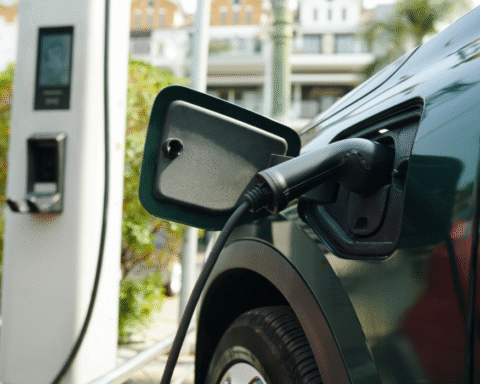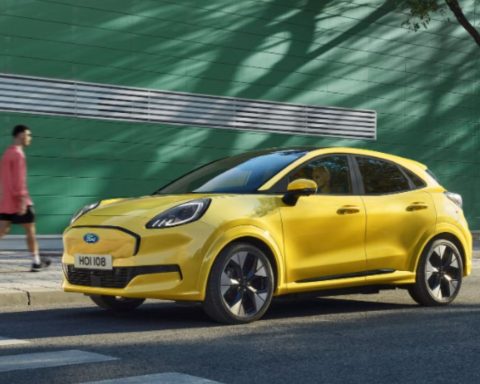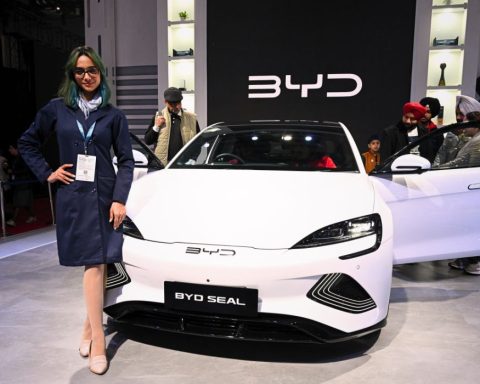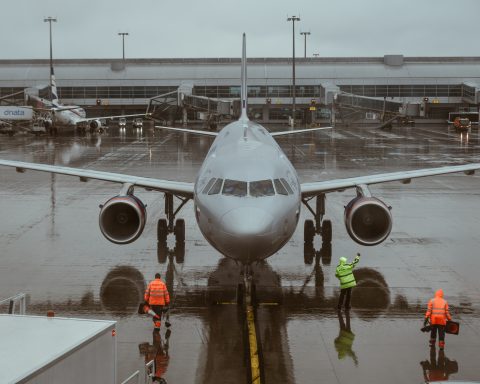It was an idea that seemed to have all the right ingredients for the tech-saturated world of 21st century urban mobility. In 2015, a Helsinki start-up unveiled a plan for something it called “mobility-as-a-service,” or MaaS, based on ideas that had been developed in a 2014 masters’ thesis at a Finnish university. The company, Global MaaS, had built an app that provides city-dwellers with a digital one-stop shop for all sorts of travel options – transit, taxis, ride hailing, bike sharing, and so on.
With Google’s online mapping function, commuters could plot the best way to get from A to B and then, through the app, procure or book the transportation modes that fit the route and the users’ preferences. Global MaaS sells monthly subscriptions, not unlike cell phone packages, that provide various combinations – up to a given number of transit trips, a certain number of ride-hailing journeys and so on; the bookings are made through smart phones, and a single transaction covers all the legs of a journey. The “unified” payment is meant to encourage multi-modal trips, as a 2021 Portuguese study pointed out. The company’s mission is to provide a “true” alternative to private vehicle ownership. “MaaS,” according to the firm’s website, “could be the single most powerful tool to decarbonise transport for future generations.”
The idea rapidly caught the imagination of other mobility entrepreneurs, as well as venture capital firms and transportation giants like Siemens. “We need to make end-to-end trip planning easier,” says deputy CEO Roland Busch.
As of late 2019, Global MaaS had raised almost €54 million ($84 million) from investors including BP and Mitsubishi. Its app, known as Whim, was available in Helsinki, Vienna, Antwerp, and a handful of other cities. Other versions of MaaS had appeared in Stockholm, as well as trials in North America, India and Australia. There’s even a MaaS industry association.
Yet for all the hype and seeming promise, the concept hasn’t taken off. Transportation experts know that individuals’ travel habits are difficult to change. Some analysts have enumerated the long list of stakeholders — private, public and otherwise — that have to be on the same page to ensure that MaaS ventures deliver a benefit. Others have raised questions about what role municipalities should play in the oversight and regulation of these kinds of undertakings.
It also became apparent that in some jurisdictions, municipal transit agencies have not welcomed this innovation – most don’t want to relinquish the pricing and distribution of fares to third parties – and consumers have been slow to sign on. According to a recent report by Bloomberg/CityLab, some MaaS firms are also facing financial difficulties because the business model isn’t especially profitable, yet. “If you’re going to disrupt automobiles, one of the biggest industries in the world, it will take a bit of time,” said Global MaaS founder Sampo Hietanen.
The uncertainty orbiting around the MaaS sector reveals much about the promise, risk and peril of digital urban mobility, which is, arguably, the single most sought-after prize in the sprawling smart city industry. Smart mobility encompasses a wide range of digital technologies and applications, from those already in wide usage (car and bike sharing services, ride-hailing, transit smart cards, parking apps, electric vehicles, and the steadily expanding array of micro-mobility products on the market) to those that are very much under development (autonomous cars, buses and trucks, “smart” traffic signals, curb-mapping, drone delivery vehicles, and even streets where illuminated lane pavers adjust automatically based on traffic levels detected by sensors, an idea bruited by Sidewalk Labs for its now-cancelled Quayside project).
Many of these technologies will rely heavily on artificial intelligence algorithms and densely layered digital mapping applications, such as Google Maps, Tom Tom, and Waze, as well as proprietary systems being developed by car manufacturers. They mesh together GPS, satellite images and cell phone signals along with a rapidly expanding collection of other data streams, from dynamic bike-sharing or transit maps to parking spot addresses and eventually, perhaps, the location of un-filled potholes. Some of the granular information that drives these services will come from the cell phones of people moving through cities, while other tranches will be harvested from municipal agencies’ open data portals.
In some fields, there are enormous opportunities presented by the technologies that fall under the broad heading of smart mobility: more responsive traffic and transit planning; improved accessibility for groups that face impediments in moving around cities (disabled residents, seniors, children); and better low-carbon alternatives to privately owned fossil-fuel burning vehicles.
Yet the disruptive arrival of ride hailing services like Uber and Lyft — which, pre-pandemic, fueled congestion and eroded transit usage — serves as a warning that future market-driven mobility innovations will require scrutiny, careful policy planning, and clear-eyed assessments of the costs and the benefits.
* * *
Since the dawn of rail era, transportation technologies have done more to physically shape and re-shape cities than any other innovation, except perhaps digital networks. From trains to trams, streetcars, cars, trucks, planes, hulking container ships, elevators, and high-speed rail, the sprawling narrative of urbanization tracks the powerful trajectory of transportation technology, and its capacity to collapse distance, turbo-charge trade and alter the global environment.
The digitization, automation and electrification of transportation heralds the next chapter in this story, and there’s good reason to assume these braided forms of innovation will have far-reaching consequences.
Electrification — not just cars, but also everything from planes to e-bikes — holds out the potential for weaning 21st century society from its addiction to gasoline, but the environmental benefits only click in if the electrical grids that support all those new EVs can be both scaled up and decarbonized.
Automation promises to remove driver error from the operation of trucks and cars, and give rise to new forms of urban transportation. But AVs will only come into widespread use once navigation technologies have been thoroughly de-bugged, and cities develop rules and norms governing the operation of such vehicles in spaces they share with pedestrians, cyclists and other non-automated traffic.
The digitization of urban transportation, which is linked closely to both automation and electrification, encompasses an ever-expanding collection of technologies that are transforming vehicles into wifi-enabled moving computers. Thus equipped, they are linked into intricate networks of mapping software, GPS navigation systems, sharing apps and digitally enhanced infrastructure platforms that govern the operations of streets, roads and highways based on continuous readings of traffic flow.
Many of these applications already exist, but they tend not to be integrated in ways that allow cities to take full advantage of digital network technology to address congestion. Even more problematically, the prospect of fully digitized mobility also raises critical questions about privacy, surveillance and security.
In recent years, so-called “black hats” (i.e., programmers hired to look for bugs) have figured out how to remotely hack into Teslas and commandeer infotainment systems, operate doors and alter steering and accelerating modes, but not take over control of the vehicle, Security Week Magazine reported in May, 2021. Stories about hacks on AVs and other electric vehicles have also circulated, raising fears about the potential for weaponing self-driving cars. Some scholars, in turn, have documented potential security breaches and cyber-attacks against intelligent transportation systems (ITS), the highly integrated digital/sensor networks that monitor and control traffic.
COVID-19 further revealed the ways in which politics and abrupt swings in public opinion can affect the evolution of emerging mobility technologies as much as advances in engineering. Because the pandemic coincided with a spate of severe weather crises and served up bracing lessons about the experience of global catastrophes, many governments stepped up their carbon reduction plans and established dates for the phase out of combustion-engine powered vehicles — something that never happened before 2020.
Those moves, in turn, stoked demand for battery electric vehicles, whose performance and range have steadily improved, and prompted governments to step up investments in charging infrastructure and grid capacity. A growing number of major automakers, in turn, have pledged to move to all electric in coming years — a development that could happen sooner than many expect. According to BloombergNEF, in fact, global EV sales jumped 80% in 2021, and accounted for 7.2% of all vehicle sales in the first half of 2021.
Similarly, the market for “micro-mobility” devices, many of which are battery-powered, saw its own pandemic bounce. With the drop in car traffic and transit use, many cities significantly expanded their networks of bike lanes to accommodate the growing use of e-scooters and e-bikes, as well as conventional bicycles app-based e-scooters, and municipal bike-sharing services.
Market research studies have forecast rapid growth in this segment, and some assessments have found that people who rely on micro-mobility devices are traveling longer distances. “According to a US micro-mobility company that rents e-scooters,” noted a 2020 McKinsey Partners study, “average trip distances have grown 26 percent since the start of the pandemic, with rides in some cities, such as Detroit, increasing by up to 60 percent.”
These developments serve as a reminder that the unfurling future of digital mobility will be radically different than the familiar, congested world of big city traffic.
Reprinted with permission from Dream States: Smart Cities, Technology and the Pursuit of Urban Utopias (Coach House Books, 2022).







